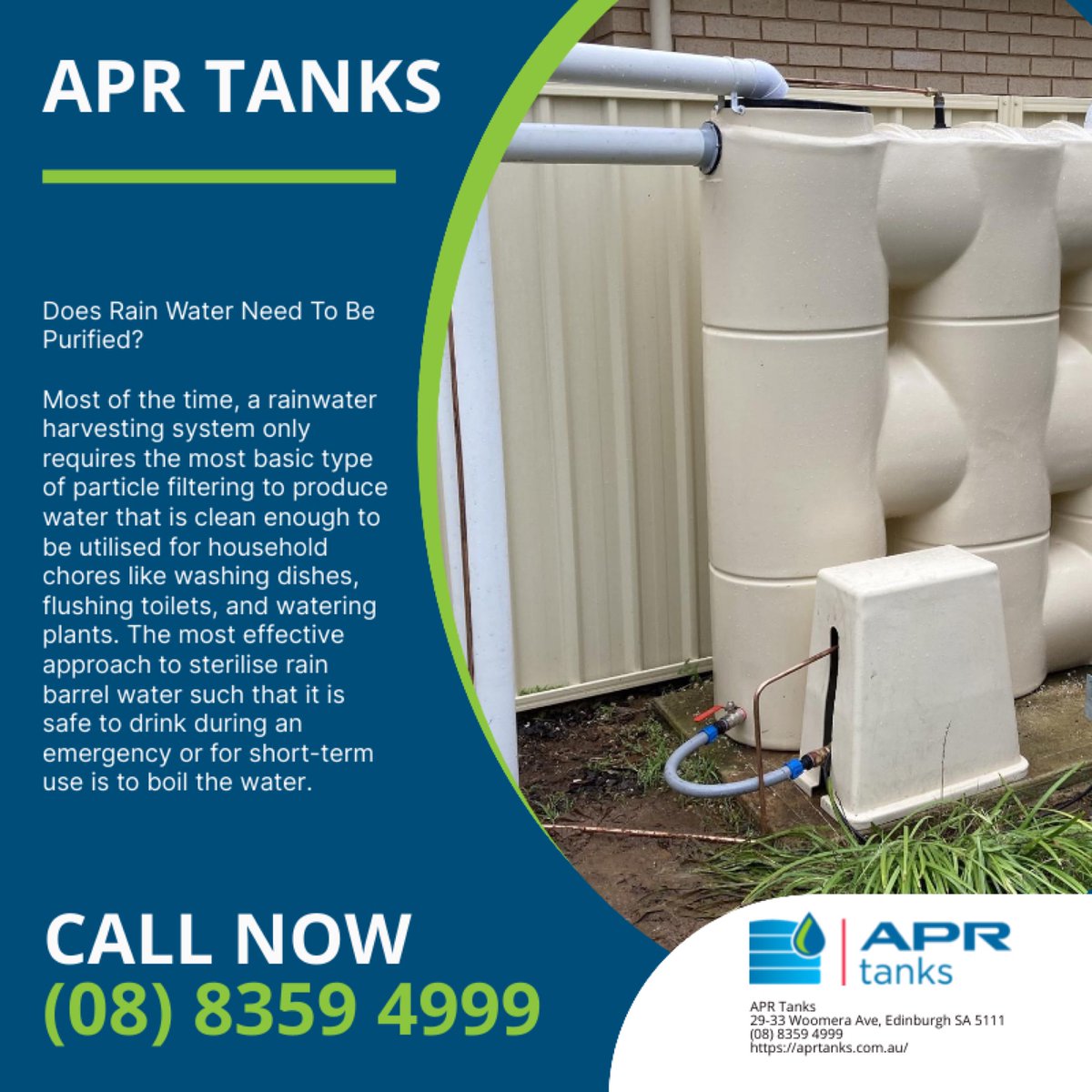Please add some products from our shop, so we can generate a quote for you.
To get rid of chemical contaminants like heavy metals, you may also make it mandatory to use a water filtration system. Rainwater collected for drinking needs to undergo routine filtering, disinfection, and testing (chlorine is the cheapest and easiest to get purification procedure and has been utilised as a disinfectant recently). For filtration, you need 68.0191 millilitres of chlorine per 3800 litres of water.
Most of the time, a rainwater harvesting system only requires the most basic type of particle filtering to produce water that is clean enough to be utilised for household chores like washing dishes, flushing toilets, and watering plants. The most effective approach to sterilise rain barrel water such that it is safe to drink during an emergency or for short-term use is to boil the water. This method gets rid of the bacteria, viruses, and parasites that might cause diarrhoea. It might only be a simple water tank at the bottom of a drain pipe used to water roses, or it might be a more complex system that provides water for toilets, washing, industrial processes, and other uses.
It is not recommended to discharge overflows or discharge pipes from roof-mounted appliances such hot water heaters or evaporative air conditioners into the roof catchment area. Water ponding in gutters should be prevented so that there are no mosquito breeding grounds and no chance that mosquito eggs will get swept into tanks.

Maintaining the right dosage is crucial since chlorine is reactive and can easily combine with some organic molecules to produce compounds like chloroform. To remove the aftertaste and chlorine smell, more activated carbon filters are also necessary. In cases when boiling the water is not an option, the World Health Organisation suggests filtering it first before chemically purifying it. Iodine or chlorine-based commercial water filtering products are widely accessible.
Strain turbid water through a clean, porous medium, such as a cotton cloth, to remove silt and other particles. Chemical therapy is not effective against all parasites. Rainwater has a lot of applications, but it’s not as pure as you may think, so you shouldn’t just drink it. It’s possible for several types of pollutants to enter the water you gather from rain (for example, bird droppings on the roof could end up in the barrel or water tank).
Rainwater can include pathogens, parasites, viruses, and toxins that can make you sick in addition to being linked to disease outbreaks. The quantity of water needed for the irrigation of gardens versus food preparation differs greatly. Drinking water must be devoid of these impurities, pathogens, and microbiological contaminants before it is approved for consumption, dishwashing, or bathing. Most of the time, the water we drink has through the necessary purification procedures to produce clean drinking water.
When households use rainwater to refill their water supply, they should take care to stop it from contaminating the clean water supply pipes. Because top-notch filters only permit particles smaller than 0.5mm to pass, the collected water seems to be as clean as tap water. a water intake system, a filtration system, a water pipe, and a river or lake. Rainfall and valley water. Nothing is more comforting for a farmer who is not connected to the water system than knowing that he can install a few water tanks to collect the rain and have all the water he requires.
If you have a personal water system and store only pure rainwater for drinking, it is your responsibility to keep the water clean. If so, rain in an industrial complex should be referred to as “Chemical Rain,” and rain in a coal mining zone will be called “Coal Rain.” By combining the roof with a seamless galvanised steel gutter, you may go even further to provide a pristine source of drinking water in your catchment tank.

